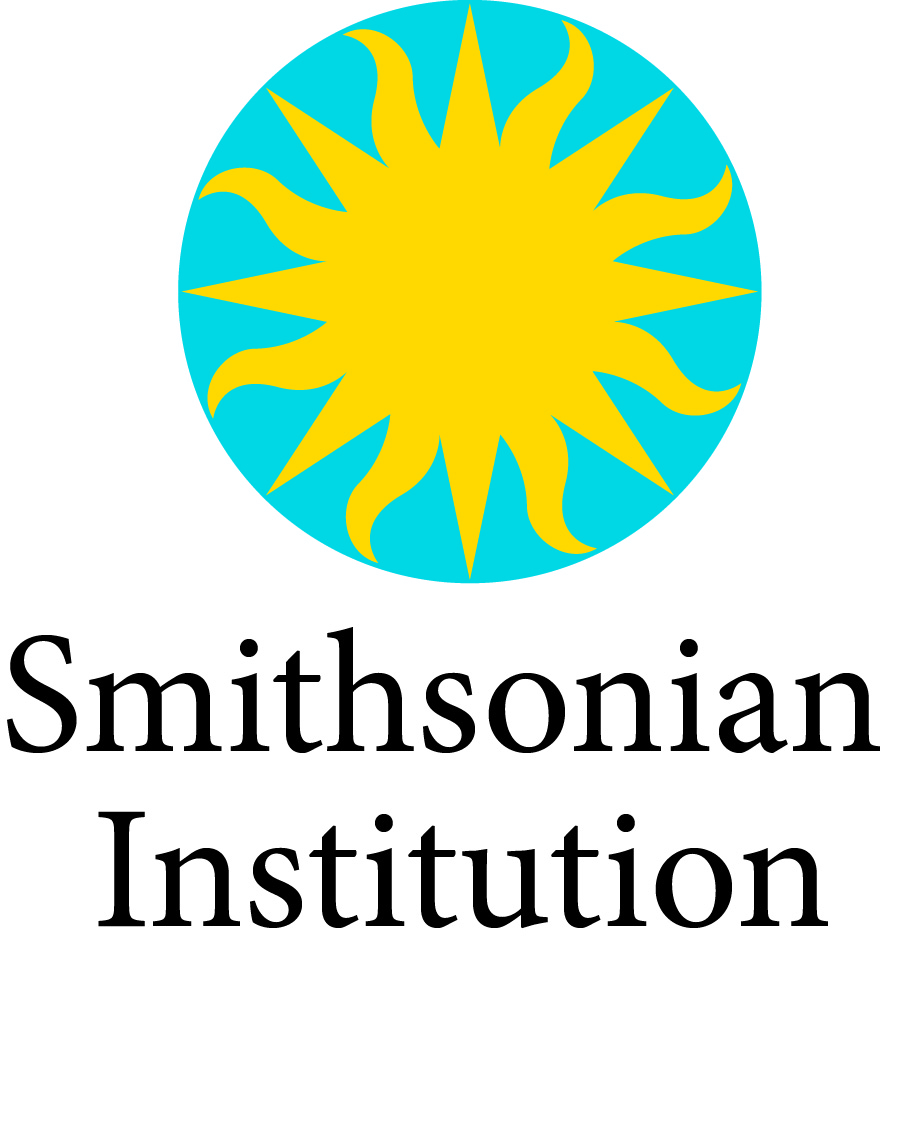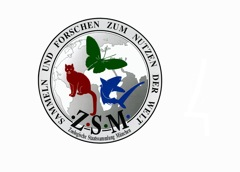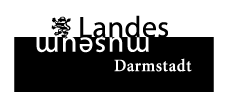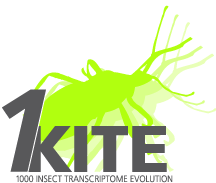Collaborators

1KITE on a larger map
BGI-Shenzhen, China

- Shanlin Liu (Coordination of sequencing and assembly, Coordination of transcriptome data management)
- Guanliang Meng (Sequencing and assembly, transcriptome data management)
- Chengran Zhou (Sequencing and assembly, transcriptome data management)
- Rui Zhang (Sequencing and assembly, transcriptome data management)
- associated: Xin Zhou (see China Agricultural University, Bejing)
Zoologisches Forschungsmuseum Alexander Koenig (ZFMK) / Zentrum für Molekulare Biodiversitätsforschung (ZMB), Bonn, Germany

- Bernhard Misof (Coordination 1KITE, Coordination of phylogenetic workflow, Basal Hexapods, TransOdonata, Neuropterida, Lepidoptera, Antliophora)
- Hamideh Fard (Secretary)
- Peter Grobe (Transcriptome data management, Database management)
- Sandra Meid (Database management)
- Alexander Donath (Transcriptome data management)
- Hermes Escalona (Coleoptera)
- Carola Greve (Coordination of taxon sampling and collecting activities, TransOdonata, Neuropterida)
- Sandra Kukowka (Assistance collecting activities)
- Christoph Mayer (Alignment refinement and modeling)
- Malte Petersen (Orthology prediction, Basal Hexapods)
- Peter Rühr (Basal Hexapods)
- Jeanne Wilbrandt (Orthology prediction, Database management)
- Alexandros Vasilikopoulos (Neuropterida)
- Tanja Ziesmann (Orthology prediction)
- associated: Karen Meusemann (see University of Freiburg)
Zoologisches Forschungsmuseum Alexander Koenig (ZFMK), Bonn, Germany, Section Arthropoda

- Ralph Peters (Coordination 1KITE, Coordination of taxon sampling and collecting activities, Polyneoptera, Dictyoptera, Paraneoptera, Hymenoptera, Neuropterida, Coleoptera, Lepidoptera, Trichoptera, Antliophora)
Rutgers University, New Brunswick, NJ, USA Department of Biological Sciences

- Jessica Ware (Dating phylogenetic trees, TransOdonata, Dictyoptera)
- Manpreet Kohli (Dating phylogenetic trees, TransOdonata)
- associated: Dominic Evangelista (see MNHN Paris)
Smithsonian Institution, Wahington D.C. USA, Office of Research Information Services, CIO

- Paul Frandsen (Trichoptera)
FSU Jena, Institut für Spezielle Zoologie und Evolutionsbiologie mit Phyletischem Museum Jena, Germany

- Rolf Beutel (Coordination 1KITE, Paraneoptera, Neuropterida, Coleoptera, Antliophora)
- Benjamin Wipfler (Polyneoptera, Dictyoptera)
- Hans Pohl (Paraneoptera)
Pfalzmuseum für Naturkunde - POLLICHIA-Museum, Germany

- Katharina Schneeberg (Antliophora)
Staatliche Naturwissenschaftliche Sammlungen Bayerns (SNSB), Department of Entomology, Zoologische Staatssammlung, München, Germany

- Michael Balke (Coleoptera)
Heidelberg Institute for Theoretical Studies (HITS), Heidelberg, Germany / Scientific Computing, Exelixis Lab

- Alexandros Stamatakis (Coordination 1KITE, Coordination of computing, data resources, and phylogenetic software development)
- Tomas Flouri (Computing, data resources, and phylogenetic software development: dating of phylogenetic trees)
- Alexey Kozlov (Computing, data resources, software development: tree inference)
- Paschalia Kapli (Dating of phylogenetic trees, Polyneoptera)
- Lucas Czech (Computing, data resources: tree inference)
- Diego Darriba (Computing, data resources, and phylogenetic software development: tree inference, dating of phylogenetic trees)
Universität Wien, Vienna, Austria Department für Evolutionsbiologie

- Günther Pass (Coordination 1KITE, Basal Hexapods)
- Daniela Bartel (Basal Hexapods)
- Oliver Macek (Basal Hexapods)
- Alexander Böhm (Basal Hexapods)
- Manfred Walzl (Basal Hexapods)
- associated: Gerald Timelthaler (Basal Hexapods), currently: Med. Universität Wien
- associated: Nikolaus Szucsich (see NHM Wien)
Department of Animal Biodiversity
- Harald Letsch (Polyneoptera, Dictyoptera, Coleoptera)
University of Tsukuba, Sugadaira Montane Research Center / Arthropod Comparative Embryology, Japan

- Ryuichiro Machida (Coordination 1KITE, Basal Hexapods, TransOdonata, Polyneoptera)
- Mari Fujita (Polyneoptera)
- Yuta Mashimo (Polyneoptera)
- Yasutaka Nakagaki (Basal Hexapods)
- Shota Shimizu (Polyneoptera)
- Toshiki Uchifune (Polyneoptera)
- associated: Shigekazu Tomizuka (see Echigo Museum)
- associated: Kaoru Sekiya (Basal Hexapods), Research administrator Office, University of Tsukuba
Ehime University, Department of Biology, Graduate School of Science and Engineering, Japan

- Makiko Fukui (Basal Hexapods)
Echigo-Matsunoyama Museum of Natural Science ‘Kyororo’, Japan
- Shigekazu Tomizuka (Basal Hexapods)
Universität Hamburg, Biozentrum Grindel und Zoologisches Museum, Hamburg, Germany

- Frank Friedrich (Paraneoptera, Coleoptera, Trichoptera, Antliophora)
- Martin Kubiak (Trichoptera)
Zoologisches Museum Hamburg, Curator Entomology, Germany

- Kai Schütte (Polyneoptera, Dictyoptera)
Medical and Biological Engineering Research Group, School of Engineering, University of Hull, UK
- Alexander Blanke (Basal Hexapods, TransOdonata)
North Carolina State University, Department of Entomology, Wiegmann-Lab
- Brian Wiegmann (Antliophora)
- associated: Keith Bayless (Antliophora)
California Academy of Sciences

- Michelle Trautwein (Antliophora)
Universität Bonn, Steinmann-Institut, Institut für Paläontologie, Germany

- Jes Rust (Dating phylogenetic trees, Neuropterida)
Hessisches Landesmuseum Darmstadt, Germany

- Torsten Wappler (Dating phylogenetic trees, Neuropterida)
Centre de Recherches sur la Paléobiodiversité et les Paléoenvironnements (CR2P, UMR 7207), Sorbonne Universités & Museum National d'Histoire Naturelle (MNHM), Paris, France

- Olivier Béthoux (Dating phylogenetic trees, TransOdonata)
- Dominic Evangelista (Dictyoptera)
Universität Bonn, Institut für Evolutionsbiologie und Zooökologie, Germany

- Lars Podsiadlowski (Transcriptome data management, Phylogenetic workflow)
University of Memphis, Department of Biological Sciences, Memphis, USA

- Duane McKenna (Coleoptera)
- Seunggwan Shin (Antliophora, Coleoptera)
University of Florida, Florida Museum of Natural History, Department of Entomology and Nematology, Kahawara-Lab
- Akito Y. Kawahara (Lepidoptera)
- associated: Jesse Breinholt (Lepidoptera), current affiliation: RAPiD Genomics, Gainsville, USA
Wageningen University, Biosystematics, NL Biosystematics Group
- Sabrina Simon (Polyneoptera, Dictyoptera)
CSIRO National Research Collections Australia, Australian National Insect Collection (ANIC), Canberra, Australia

- David Yeates (Antliophora)
- associated: Karen Meusemann, see below University of Freiburg
- Adam Slipinski (Coleoptera)
- associated: Hermes Escalona (see ZFMK, Bonn)
University of Freiburg, Biology I (Zoology), Evolutionary Biology & Ecology, Freiburg, Germany

- Oliver Niehuis (Coordination of orthology prediction, TransOdonata, Hymenoptera, Neuropterida)
- Karen Meusemann (Transcriptome data management, Phylogenetic workflow, Basal Hexapods, Dictyoptera, Neuropterida, Lepidoptera, Antliophora)
Naturhistorisches Museum Wien, Vienna, Austria

- Ulrike Aspöck (Neuropterida)
- Horst Aspöck (Neuropterida)
- Nikolaus Szucsich (Basal Hexapods)
2. Zoologische Abteilung (Insekten)
3. Zoologische Abteilung - ABOL
China Agricultural University, Bejing, China

Advanced Innovation Center for Food Nutrition and Human Health & College of Food Science and Nutritional Engineering
- Xin Zhou (Coordination 1KITE, Coordination of sequencing and assembly, Coordination of transcriptome data management, Lepidoptera, Trichoptera)
Department of Entomology, Laboratory of Systematic and Evolutionary Entomology
- Ding Yang (Neuropterida)
- Xingyue Liu (Neuropterida)
Universidad de Guadalajara, Centro Universitario de Ciencias Biólogicas y Agropecuarias, Centro de Estudios en Zoología, Zapopan, Jalisco, México

Staatliches Museum für Naturkunde Stuttgart (SMNS), Hymenoptera Section, Germany
- Lars Krogmann (Hymenoptera)
Hokkaido University, Systematic Entomology / Yoshizawa Lab, Sapporo, Japan

- Kazunori Yoshizawa (Paraneoptera)
Manaaki Whenua - Landcare Research, Biosystematics, Auckland, New Zealand
1KITE Partners
- Matty Berg (Faculty of Earth and Life Sciences, VU University, Amsterdam, Netherlands; Basal Hexapods)
- Luis Mendes (Institute of Scientific Investigation of the Tropics, Lisbon, Portugal; Basal Hexapods)
- Ulrich Burkhardt (Senckenberg Museum of Natural History, Görlitz, Germany; Basal Hexapods)
- Dick Roelofs, Wouter Suring (VU University Amsterdam, Animal Ecology, Netherlands; Basal Hexapods)
- Christian Derst, Boris Musset (Zool. Institut, Biozentrum Universität Köln / ICS-4 Zelluläre Biophysik Forschungszentrum Jülich, Germany; Basal Hexapods: proton channels)
- Thomas Dejaco (University of Innsbruck, Molecular Ecology, Innsbruck, Austria; Basal Hexapods)
- Simon Grove, Lynne Forster, Kevin Bonham (Tasmanian Museum & Art Gallery, TMAG, Hobart, Tasmania; Basal Hexapods, Antliophora)
- Reinhard Predel (University of Cologne, Zoological Institute, Cologne Biocenter, Peptidome analysis, Cologne, Germany; Basal Hexapods, Polyneoptera)
- Bjoern v. Reumont (University of Leipzig, Biosciences, Leipzig, Germany)
- Christopher Hassall, Stuart Laurence, Phillip Matthews, M. Olalla Lorenzo-Carballa (School of Biology, University of Leeds, Leeds, UK; Department of Aerospace Engineering, University of Maryland, College Park, USA; Department of Zoology, University of British Columbia, Vancouver, Canada; Department of Evolution, Ecology and Behaviour, Biosciences Building, University of Liverpool, Liverpool, UK; Odonata)
- Sven Bradler (Institut für Zoologie, Georg-August-Universität Göttingen, Germany; Phasmatodea)
- Janice Edgerly-Rooks (Biology Department, Santa Clara University, Santa Clara, CA, USA; Polyneoptera)
- Frank Wieland (University of Hamburg, Zoologisches Museum Hamburg, Germany; Dictyoptera/Mantodea)
- Gavin Svenson (Department of Invertebrate Zoology, Cleveland Museum of Natural History, Ohio, USA; Dictyoptera/Mantodea)
- Ming Bai (Institute of Zoology, Chinese Academy of Sciences, Beijing, China; Grylloblattodea)
- Sean Schoville (Department of Entomology, University of Wisconsin Madison, USA; Grylloblattodea)
- Kevin Johnson (Illinois Natural History Survey, University of Illinois, Champaign, IL, USA; Paraneoptera)
- Leo Beukeboom (Evolutionary Genetics, University of Groningen, Groningen, Netherlands; Hymenoptera)
- Michael Ohl, Manuela Sann (Museum für Naturkunde, Berlin, Germany; Hymenoptera)
- Christoph Bleidorn (University of Leipzig, Leipzig, Germany; Hymenoptera)
- Mareike Wurdack (University of Freiburg, Freiburg, Germany; Hymenoptera: Sphecidae, Crabronidae)
- Thomas Schmitt (Department of Animal Ecology and Tropical Biology, University of Würzburg, Germany; Hymenoptera: Chrysididae)
- John Heraty (College of Natural and Agricultural Sciences, Entomology, University of California, Riverside, CA, USA; Hymenoptera)
- David J. W. Morgan (California Department of Food and Agriculture, Riverside, CA, USA; Hymenoptera)
- Eric Anton (FSU Jena; Jena, Germany; Coleoptera: evolution of adults head structures of Polyphaga)
- Alexey Solodovnikov (Zoologisk Museum Copenhagen, Denmark; Coleoptera: follow-up project on Staphylinoidea)
- Si-qin Ge (Chinese Academy of Sciences, Beijing, China; Coleoptera: follow-up project on evolution of Chrysomeloidea)
- Richard Leschen (Landcare Research, New Zealand Arthropod Collection; Coleoptera: follow-up projects on Staphylinoidea and Cucujiformia)
- Michael Balke (Zoologische Staatssammlung München, Gemany: Coleoptera: follow-up project on Adphaga - main focus on aquatic groups)
- Michael Shackleton (La Trobe University, Department of Environmental Management and Ecology, WODONGA, Victoria, Australia; Trichoptera)
- Alice Wells (CSIRO, Australian Biological Resources Study, Canberra, ACT, Australia; Trichoptera)
- Ferdy C. de Moor (Department of Freshwater Invertebrates, Albany Museum, Grahamstown, South Africa; Trichoptera)
- Rudolf Meier (Department of Biological Sciences, National University of Singapore, Singapore; Diptera)
- Urs Schmidt-Ott (Department of Organismal Biology and Anatomy, University of Chicago, IL, USA; Diptera)
- Gregory W. Courtney (Department of Entomology, Iowa State Insect Collection, Iowa State University, Ames, IA, USA; Diptera)
- Gregory Curler (Department of Entomology, Purdue University, West Lafayette, IN, USA; Diptera)
- Derek Sikes (Museum of the North, University of Alaska, Fairbanks, Alaska, USA; Mecoptera)
- Charles Mitter (University of Maryland, College Park, Maryland, USA; Lepidoptera)
- Lars Jermiin (Australian National University, ACT, Canberra, Australia; Bioinformatics and Phylogenetics, Modeling)
- Robert Lanfear (Australian National University, ACT, Canberra, Australia; Bioinformatics and Phylogenetics)
- Brett Calcott (ARC Postdoctoral Fellow, Australian National University, Canberra, ACT, Australia; Phylogenetics)
- Sonja Grath (Department of Biology, Ludwig-Maximilian University, Munich, Germany; DNA methylation islands in insect transcriptomes; Comparative analysis of the components of the insect immune system)
- Erich Bornberg-Bauer (Institute for Evolution and Biodiversity, University of Muenster, Germany; Domain evolution in insects)
- Fatima Mitterboeck, Sarah J. Adamowicz, Jinzhong Fu (Department of Integrative Biology, University of Guelph, Ontario, Canada; Evolutionary transcriptomics of flight loss in insects)
- Hui Wang (Centre for Ecology and Hydrology, Wallingford, Oxon, UK; Distribution and diversity of insect viruses)
- Hugh Robertson (Department of Entomology, University of Illinoi at Urbana-Champaign, Urbana, IL, USA; Evolution or chemosensory system in insects: olfactory, gustatory, vision and "hearing" / comparative analysis of (olfactorial) receptor proteins)
- Christian Drosten & Group (Institut für Virologie, Universitätsklinikum Bonn, University of Bonn, Bonn, Germany; Distribution of viral genomes in insects with potential relatives in humans)
- Lars Podsiadlowski (Institut für Evolutionsbiologie und Zooökologie, University of Bonn, Bonn, Germany; Evolution of Matrixin Metalloproteinases; Evolution of anti-microbial peptides in insects; Comparative analysis of the components of the insect immune system)
- Lars Podsiadlowski, Thomas Bartolomaeus (Institut für Evolutionsbiologie und Zooökologie, University of Bonn, Bonn, Germany; Intermediate filament evolution in Hexapoda)
- Marta Casanellas, Jesus Fernandez-Sanchez (Departament Matematica Aplicada I, Universitat Politècnica de Catalunya, Barcelona, Spain; Application of GMM invariants to large transcriptomic data)
- Xioanfan Zhou (Dept. of Biological Sciences, Vanderbilt University, Nashville, TN, USA; Evolution or chemosensory system in insects: olfactory, gustatory, vision and "hearing" / comparative analysis of (olfactorial) receptor proteins)
- Brian Y. Chow (University of Pennsylvania, Skirkanich, Philadelphia, USA), Ed Boyden (MIT Center for Neurobiological Engineering, Camebridge, MA, USA), Susumu Yoshizawa (PostDoc, Department of Civil and Environmental Engineering, Camebridge, MA, USA) and Gane Ka-Shu Wong (Katz Group Centre for Health and Pharmacy, University of Alberta, Canada); (Protein Characterization: optogenetic tools for bioengeniering, bioengineering, medicine, biology, and neuroscience from 1KITE transcriptome data)
- Ewald Grosse-Wilde (Department of Evolutionary Neuroethology, Max Planck Institute for Chemical Ecology, Jena, Germany; Comparative analysis of (olfactorial) receptor proteins)
- Jennifer Zaspel (Entomology, Purdue University, IN, USA; Evolution of detoxification systems and chemical communication in Lepidoptera)
- Franziska Heidemann, Dietrich Ober (Biochemical Ecology and Molecular Evolution, University of Kiel, Germany: Evolution of detoxification systems and chemical communication in Lepidoptera)
- Susanne Dobler, Kai Schütte, (University Hamburg; "Coping with toxic host plants": Identifying and characterizing enzymes and transporters for adaptations to secondary plant compounds)
- Dietrich Ober, Phillipp Krohn (Biochemical Ecology and Molecular Evolution, University of Kiel, Germany: "Coping with toxic host plants": Identifying and characterizing enzymes and transporters for adaptations to secondary plant compounds - currently focused on Orthoptera)
- Christoph Mayer, Jeanne Wilbrand, Bernhard Misof, Helena Isabel Vizan Rico (ZFMK; Institut de Biologia Evolutiva (CSIC-UPF), Barcelona, Spain: Occurrence of orthologous groups of digestive enzymes in insects)
- Oliver Niehuis, Sarah Bank (University of Feiburg; Comparative analysis of genes involved in the biosynthesis of cuticular hydrocarbons (CHC) in insects)
- Shanlin Liu, Xin Zhou (BGI, China Agricultural University; Mitochondrial genome capture project from transcriptome data)
